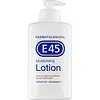What's inside
What's inside
 Key Ingredients
Key Ingredients

 Benefits
Benefits

No benefits
 Concerns
Concerns

 Ingredients Side-by-side
Ingredients Side-by-side

Water
Skin ConditioningParaffinum Liquidum
EmollientIsopropyl Palmitate
EmollientPetrolatum
EmollientGlycerin
HumectantCeresin
Emulsion StabilisingStearic Acid
CleansingGlyceryl Stearate
EmollientSorbitan Oleate
EmulsifyingCetyl Alcohol
EmollientPhenoxyethanol
PreservativeTriethanolamine
BufferingPEG-4 Laurate
EmulsifyingPEG-4 Dilaurate
EmulsifyingLaureth-23
CleansingParfum
MaskingCarbomer
Emulsion StabilisingPEG-4
HumectantIodopropynyl Butylcarbamate
PreservativeTetrasodium EDTA
Disodium EDTA
Tocopherol
AntioxidantBHT
AntioxidantCitrus Limon Fruit Extract
MaskingCitrus Nobilis Peel Extract
MaskingAlpha-Isomethyl Ionone
PerfumingAmyl Cinnamal
PerfumingBenzyl Salicylate
PerfumingCitronellol
PerfumingCitrus Aurantium Peel Oil
Citrus Limon Peel Oil
MaskingEugenol
PerfumingGeraniol
PerfumingHexyl Cinnamal
PerfumingLimonene
PerfumingLinalool
PerfumingLinalyl Acetate
MaskingTerpineol
MaskingTetramethyl Acetyloctahydronaphthalenes
MaskingTrimethylbenzenepropanol
MaskingVanillin
MaskingWater, Paraffinum Liquidum, Isopropyl Palmitate, Petrolatum, Glycerin, Ceresin, Stearic Acid, Glyceryl Stearate, Sorbitan Oleate, Cetyl Alcohol, Phenoxyethanol, Triethanolamine, PEG-4 Laurate, PEG-4 Dilaurate, Laureth-23, Parfum, Carbomer, PEG-4, Iodopropynyl Butylcarbamate, Tetrasodium EDTA, Disodium EDTA, Tocopherol, BHT, Citrus Limon Fruit Extract, Citrus Nobilis Peel Extract, Alpha-Isomethyl Ionone, Amyl Cinnamal, Benzyl Salicylate, Citronellol, Citrus Aurantium Peel Oil, Citrus Limon Peel Oil, Eugenol, Geraniol, Hexyl Cinnamal, Limonene, Linalool, Linalyl Acetate, Terpineol, Tetramethyl Acetyloctahydronaphthalenes, Trimethylbenzenepropanol, Vanillin
 Reviews
Reviews

Ingredients Explained
These ingredients are found in both products.
Ingredients higher up in an ingredient list are typically present in a larger amount.
BHT is a synthetic antioxidant and preservative.
As an antioxidant, it helps your body fight off free-radicals. Free-radicals are molecules that may damage your skin cells.
As a preservative, it is used to stabilize products and prevent them from degrading. Specifically, BHT prevents degradation from oxidation.
The concerns related to BHT come from oral studies; this ingredient is currently allowed for use by both the FDA and EU.
However, it was recently restricted for use in the UK as of April 2024.
Learn more about BHTCarbomer is a polymer of acrylic acid. Its main role is to create a gel consistency.
A high amount of carbomer can cause pilling or balling up of products. Don't worry, most products contain 1% or less of carbomer.
Glyceryl Stearate is a mix of glycerin and stearic acid.
It is used to stabilize the mixing of water and oil ingredients. By preventing these ingredients from separating, it can help elongate shelf life. It can also help thicken the product's texture.
As an emollient, it helps soften skin and supports barrier-replenishing ingredients.
In cosmetics, Glyceryl Stearate is often made from vegetable oils or synthetically produced.
This ingredient may not be fungal-acne safe
Fun fact: The human body also creates Glyceryl Stearate naturally.
Learn more about Glyceryl StearateIsopropyl Palmitate is a texture enhancer and emollient. It is an ester of isopropyl alcohol and palmitic acid.
Palmitates are emollients. Emollients help keep your skin soft and smooth by creating a barrier that traps moisture in.
When added to cosmetics, Isopropyl Palmitate creates a silky texture and improves spreadability.
Isopropyl Palmitate may not be fungal acne safe. It can worsen acne prone skin.
Learn more about Isopropyl PalmitateParaffinum Liquidum is also known as liquid paraffin. It is a type of highly refined mineral oil.
Like other oils, Paraffinum Liquidum has emollient properties. Emollients help soothe and soften the skin. By creating a barrier to trap moisture within, emollients help keep your skin hydrated.
Paraffinum Liquidum does not irritate the skin and is non-comedogenic.
Learn more about Paraffinum LiquidumPetrolatum is more commonly known as petroleum jelly. It is created by mixing waxes and mineral oils.
This ingredient is effective at reducing water loss by 99%. This is because it is an occlusive. Occlusives create a hydrophobic barrier on the skin to prevent evaporation. This property makes it great for hydrating dry skin.
Pro tip: Use occlusives, such as this ingredient, on damp skin for the best results.
The quality or origin of petrolatum is only known when disclosed by the brand. Most cosmetic petrolatum has gone through several purification stages.
Another benefit of occlusives is it protects your skin against infection or allergies.
Petrolatum may not be safe for fungal-acne. Studies show mineral oil / petroleum leads to the growth of M. Furfur, a type of yeast.
Learn more about PetrolatumPhenoxyethanol is a preservative that has germicide, antimicrobial, and aromatic properties. Studies show that phenoxyethanol can prevent microbial growth. By itself, it has a scent that is similar to that of a rose.
It's often used in formulations along with Caprylyl Glycol to preserve the shelf life of products.
Water. It's the most common cosmetic ingredient of all. You'll usually see it at the top of ingredient lists, meaning that it makes up the largest part of the product.
So why is it so popular? Water most often acts as a solvent - this means that it helps dissolve other ingredients into the formulation.
You'll also recognize water as that liquid we all need to stay alive. If you see this, drink a glass of water. Stay hydrated!
Learn more about Water